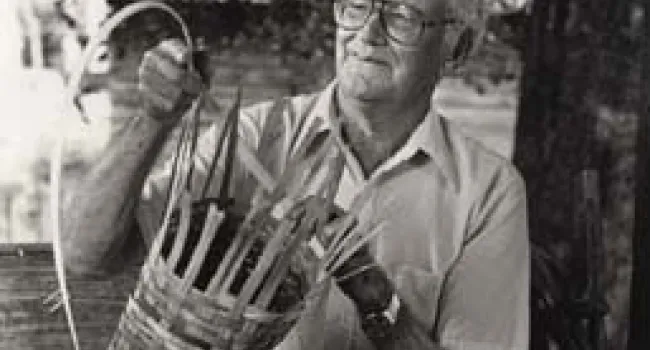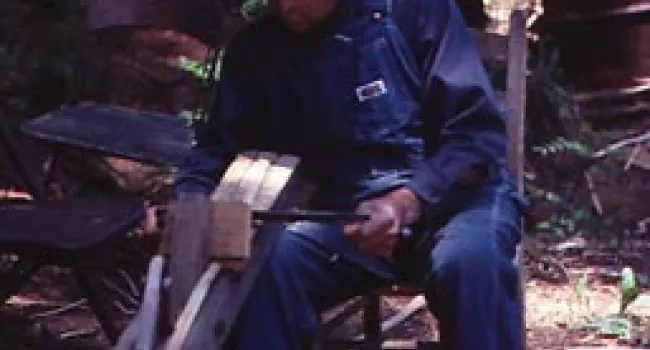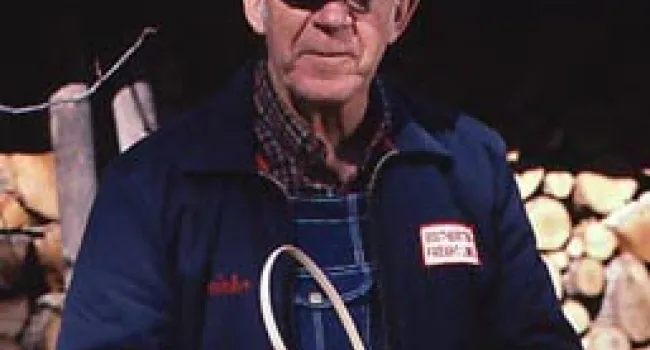
Stout Hearts: Traditional Oak Basketmakers of the S.C. Upcountry

The Piedmont is a land of trees with 18 species of oak growing on the forested slopes. European settlers contributed the steel tools and the knowledge to craft the split oak basket form. These strong, light, and versatile containers have been a part of South Carolina folk culture for over 300 years.
Split oak basketmakers use two ancient weaving techniques. The simpler weave, used on most baskets, is the "over and under one" method. The "twill" pattern produces a more complex mesh. Basketmakers combine the desired weaving pattern with one of two base forms: radiating ribs to make round-bottomed baskets or interwoven ribs to create square-bottomed baskets.
Basketmakers expend considerable effort preparing the wood before the basket even takes shape. First, they locate a suitable young white oak, typically 3 to 8 inches in diameter. After the tree is cut down, it is split in half over and over until each section is as wide as the final splits desired. These "billets" are trued up using a drawknife and shaving horse. Each billet is halved many times to produce the paper-thin splits. They are then soaked in water to retain their flexibility during construction.
Until recently oak baskets were important to agricultural production in South Carolina. Easier to transport and less expensive than barrels, baskets were made large and substantial to withstand heavy use. The most common forms were large hampers and cotton baskets. Often capable of holding three to four bushels of corn, hampers were employed for a great variety of farm and household tasks. Even small farms had up to a dozen hampers.





